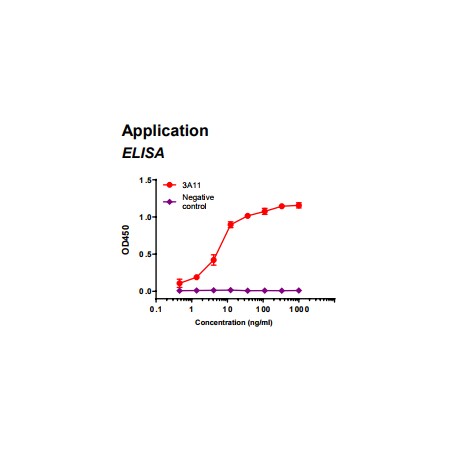No products
Product successfully added to your shopping cart
There are 0 items in your cart. There is 1 item in your cart.
RABBIT MONOCLONAL
- Protein Control Ligand
- Pathway Inhibitors
- Function Modulators
- Activators
- G Protein-Coupled Receptor Ligands
- Nuclear Receptor Ligands
- GDNF Receptors
- TNF Receptors
- Transcription Factors
- Chemokines
- Cytokine Receptors
- Biomarkers and Buffer Solutions
- Molecular Probes
- Stem Cell Research
- Alzheimer's Disease
- Apoptosis
- Cancer Research
- Epigenetics
- Metabolites
- PET/SPECT Imaging Precursors
- Customized Screening Library
- Ultra Pure Pharmacological Standard
- Tissue Microarray (TMA)
- Proteins and Antibodies
- Primary Cells
- ELISA KIT
- Natural Products
- Lab Equipments
- Humanized Mice for PDX Platform
- Rare Chemicals
- Custom Synthesis
- Antibacterial
- Antifungal
- Antioxidant
- Antiviral
- Molecular Glues
- PROTAC Linker
- SARS-CoV
 View larger
View larger Rabbit anti-human Fatty acid binding protein 3 (FABP3) monoclonal antibody clone 3A11
AP36770MA11
Molarity Calculation Cart®
HOW TO ORDER
More info
DESCRIPTION | |
Species Reactivity | Human FABP3 |
Immunogen | Full length native human FABP3 protein |
Purity | > 95% determined by SDS-PAGE |
Formulation | 0.22 µM filtered solution of PBS, pH 7.4 |
Size | 50µl (concentration 1mg/mL) |
APPLICATION | |
ELISA | 1) Antigen: human FABP3 protein at 1.0 µg/ml 2) detection antibody: rabbit anti-CKMB monoclonal antibody (clone 3A11, AP36770MA11) at initial 1.0 µg/ml followed by 1:3 serial dilutions.. |
Pairing Antibody | AP36770MG11 AP36770MB10 |
Turbidimetric Immunoassay | Tested |
Research Use or Further Manufacturing Only. | |
PREPARATION AND STORAGE | |
Preparation | Monoclonal antibody is produced by immunizing rabbit with full length native human FABP3 and purified using protein A resin. |
Storage | This antibody is shipped at 4 oC. This product is stable for 12 months from date of receipt when stored at -20oC to -70oC. Avoid freeze/thaw cycles |
BACKGROUND
Fatty Acid Binding Protein 3 (FABP3) is a 15 KD cytoplasmic protein predominantly expressed in heart, skeletal muscle, brain, and mammary gland. FABP3 transports fatty acids to mitochondria for further oxidation and modulates cell growth and proliferation. FABP3 is quickly released from cardiac myocytes following myocardial ischemia and infarction, detectable in the serum within one to three hours of chest pain. As a result, FABP3 is a sensitive biomarker for myocardial infarction. Recently, FABP3 was found as a candidate tumor suppressor for human breast cancer by arresting cell growth. |

